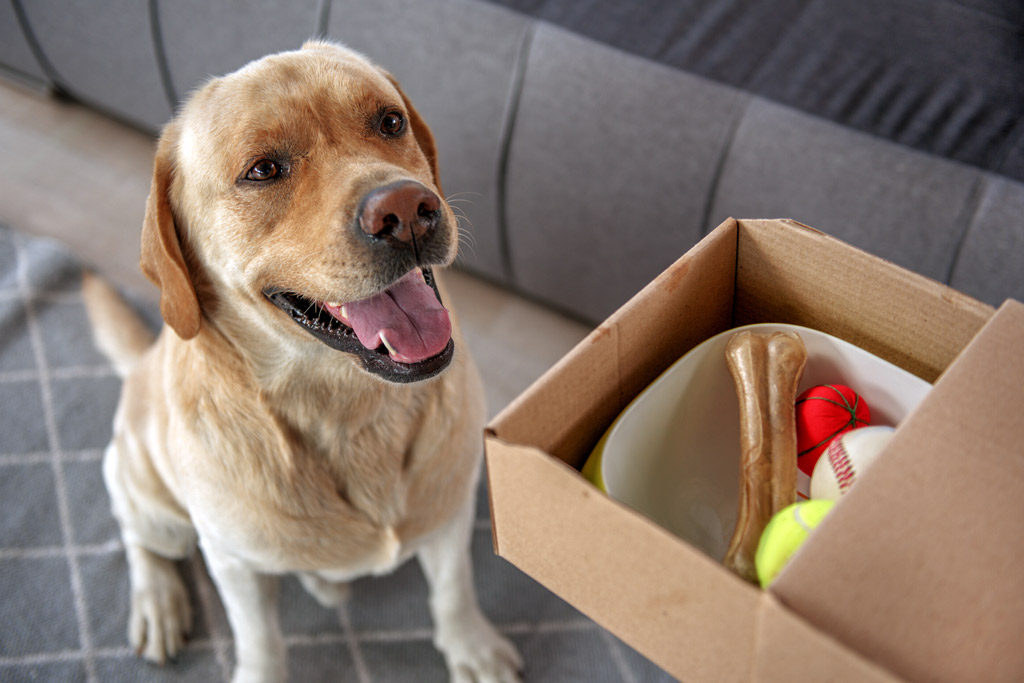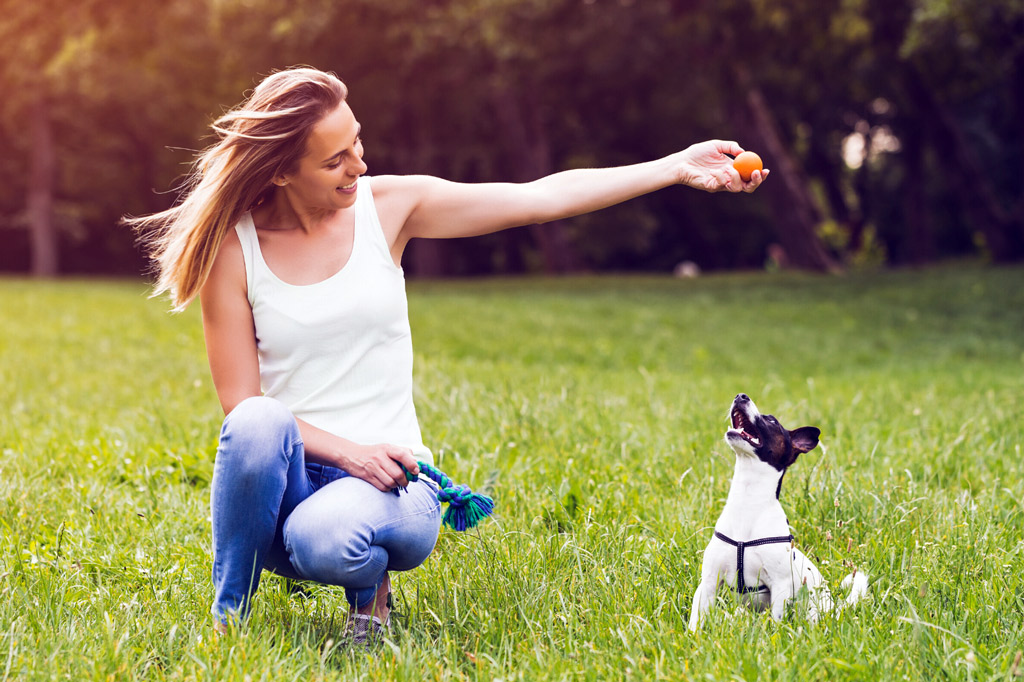
No matter what dog breed you have, playing and chewing are natural canine behaviours.
This is where dog toys come in. They are essential to provide our dogs with a proper outlet to their instincts. In fact, your pooch can develop many behaviour problems when his mental and physical needs are not met.
When it comes to dog toy options, they are endless.
That’s why choosing toys for your furry friend can be overwhelming. And you might end up with a bunch of toys gathering dust because your dog has disregarded them.
So, how do you choose a dog toy that your pooch will actually like?
It’s time to find out!
P.S. Don’t miss the table below which matches dog groups and breeds to activities and toys.
How to Choose a Dog Toy
Many doggies love fetching frisbees. Others enjoy chasing after unpredictable bouncy balls.
But dog moms face a challenge when they are not sure what toys their pups like or what is adequate for them.
Follow these 5 steps to discover what toy your dog loves.
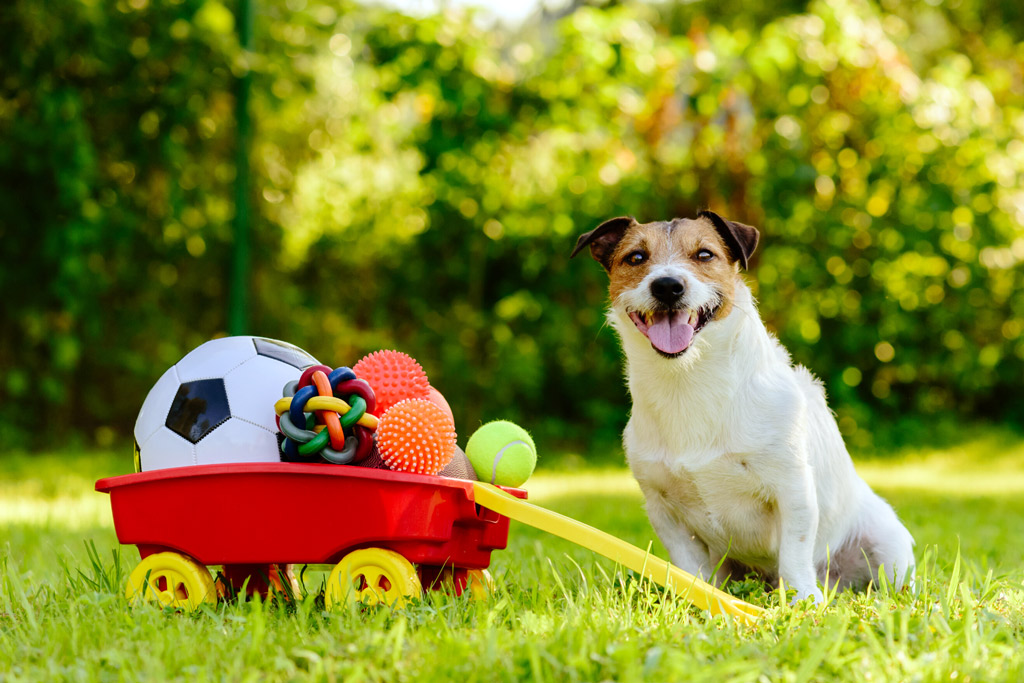
#1 – Assess Your Dog’s Instincts
Your dog’s toy preference depends highly on her personal style of playing and chewing. This is dictated by the dog’s breed.
Most dogs have been bred for a specific trait or job. As a result, some instincts have gone through further development than others.
This means your dog has specific instinctive behaviours and is why not all dogs play the same way.
Start with this fill-in-the-blank question to assess your dog’s instinct:
“Is my dog a …?”
- Chewer: Most dogs enjoy chewing. For puppies, chewing is a way to relieve pain that might be caused by teething. Adult dogs chew to keep their jaws strong and their teeth clean. Chewing also combats boredom and can relieve mild anxiety or frustration.
- Tugger: Playing tug is a healthy display of a dog’s predatory nature. Terriers show a higher inclination for tug games.
- Chaser: Hounds enjoy chasing over large distances.
- Retriever: Hunting breeds love fetching games due to their retrieving instinct. Their function used to be to retrieve prey.
- Tracker: Hounds love scent games because their job was to track prey.
- Digger: Terriers, especially Yorkshire Terriers and Westies, were originally great hunters that dug up burrows to catch the underground inhabitants. That’s why they tend to dig and make holes nowadays.
“Think about the amazing senses that your pet at home has and
Heather Bacon, BSc BVSc CertZooMed MRCVS.
how your dog spends his or her day. What could you do to engage your dog senses and use those unique abilities in a more challenging and interesting way, to improve the welfare of your pet?”
Using my dog toy finder, you’ll quickly discover which toy would best suit your dog.
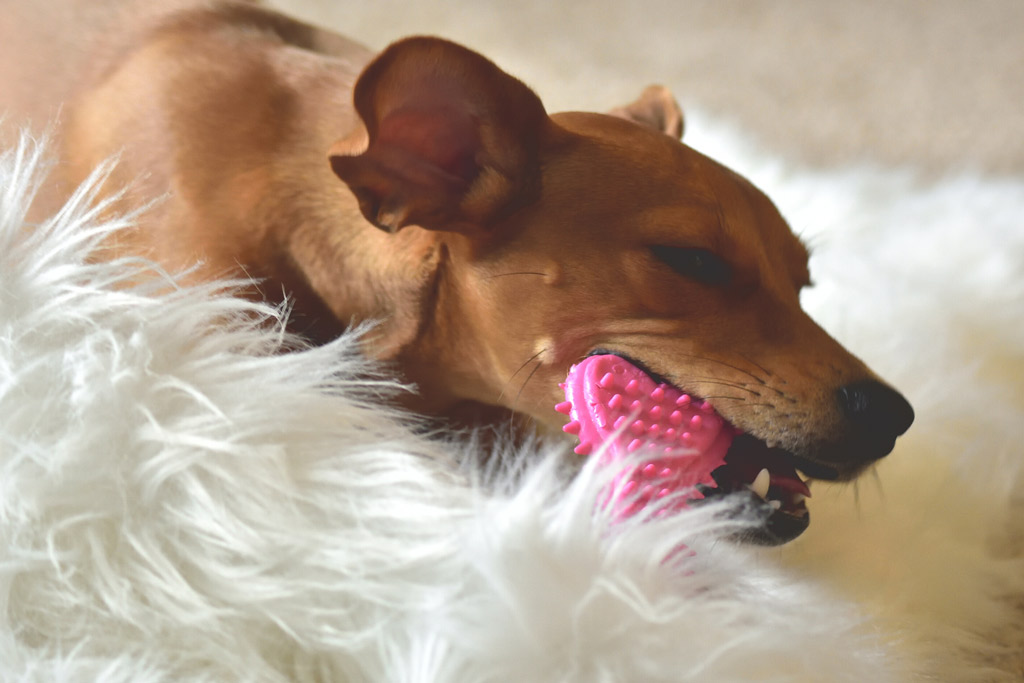
If you are not sure what your dog’s playing style is yet…
This table can help you understand your dog’s natural instincts and what activities, games and toys she might prefer, according to what dog group your pooch belongs,
| DOG GROUPS | BREEDS | SENSE, INSTINCT | GAME, ACTIVITY, TOY |
| The HoundGroup | Beagles, Dachshunds and Bassets. | Scent tracking and prey sighting. | Puzzle toys, chase or fetch. |
| The Herding Group | Collies, Shepherds, Corgis and Heelers. | Protecting livestock. | Flying disc, herding, obedience and agility. |
| The TerrierGroup | Jack Russells, Scotties, Staffordshires, Airedales, etc. | Pest control. | Tug, digging, puzzles and obedience. |
| The Non-Sporting Group | Bichons Frises, Boston Terriers, Dalmatians, Poodles, Lhasa Apsos, Bulldogs, Shiba Inus, etc. | No longer perform the duties for which they were originally bred. | Varies depending on the dog’s breed. |
| The Sporting Group | Pointers, Setters, Retrievers, Vizslas, etc. | Hunting dogs: finding, pointing, flushing, holding and retrieving game. | Fetch, swimming, walking and hiking. Also, therapy dogs, assistance dogs, and search and rescue dogs. |
| The Working Group | Alaskan Malamutes, Siberian Huskies Boxers, Akitas, Doberman Pinschers, Mastiffs, Great Danes, Dogues de Bordeaux, Rottweilers, Saint Bernards, etc. | Performing specific tasks for their owners. | Obedience and agility. |
| The Toy Group | Pekingese, Maltese, Chihuahuas, Miniature Pinschers, Papillons, Cavalier King Charles Spaniels, etc. | Companion. | Squeaky toys, tricks and games. |
P.S. Use the guide in my dog toy finder for ideas for your dog’s group and instincts!
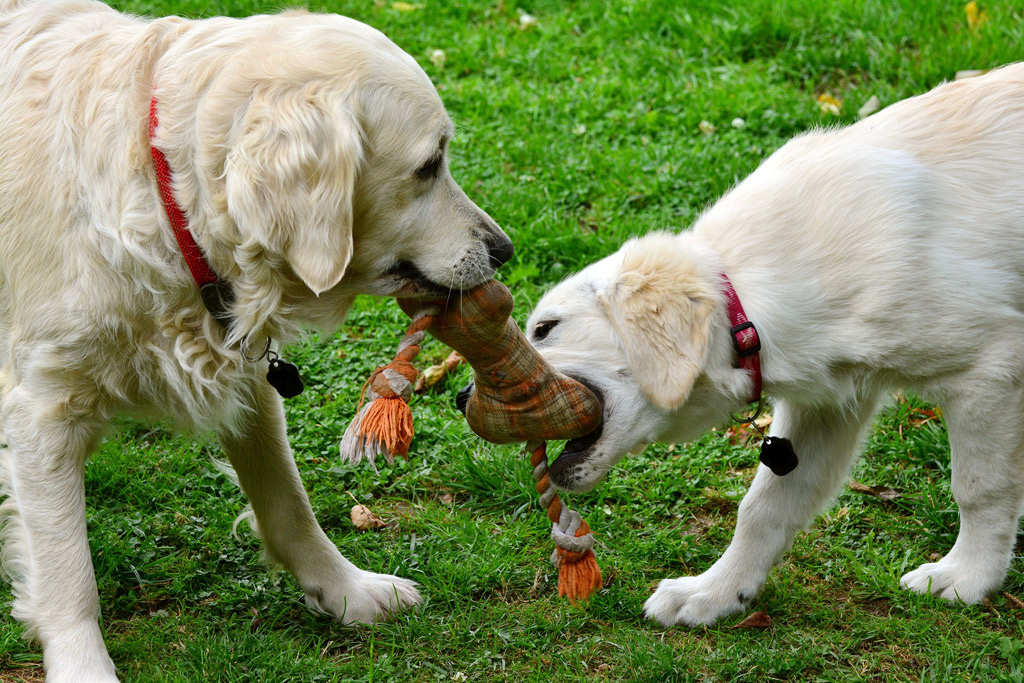
#2 – Your Dog’s Age Matters
When choosing a toy, your dog’s age is a key consideration:
- A three-week-old puppy: She still has her baby teeth. She needs toys with softer rubber or plush toys.
- From three to nine months: Your puppy will be teething, so avoid hard rubber. To help her cope with the pain and discomfort, have a good variety of chew toys that will keep her distracted from chewing everything else!
- Once the teething phase passes: Your dog will have a strong enough jaw for harder rubber toys, depending on her being an average or extreme chewer. Also, focus on her endless energy to play with balls or tug toys.
- By age seven or so: Your senior dog’s mouth strength will decrease. It’s time to give her softer toys to chew. Also, encourage her to stay active by playing with other toys that she might like.
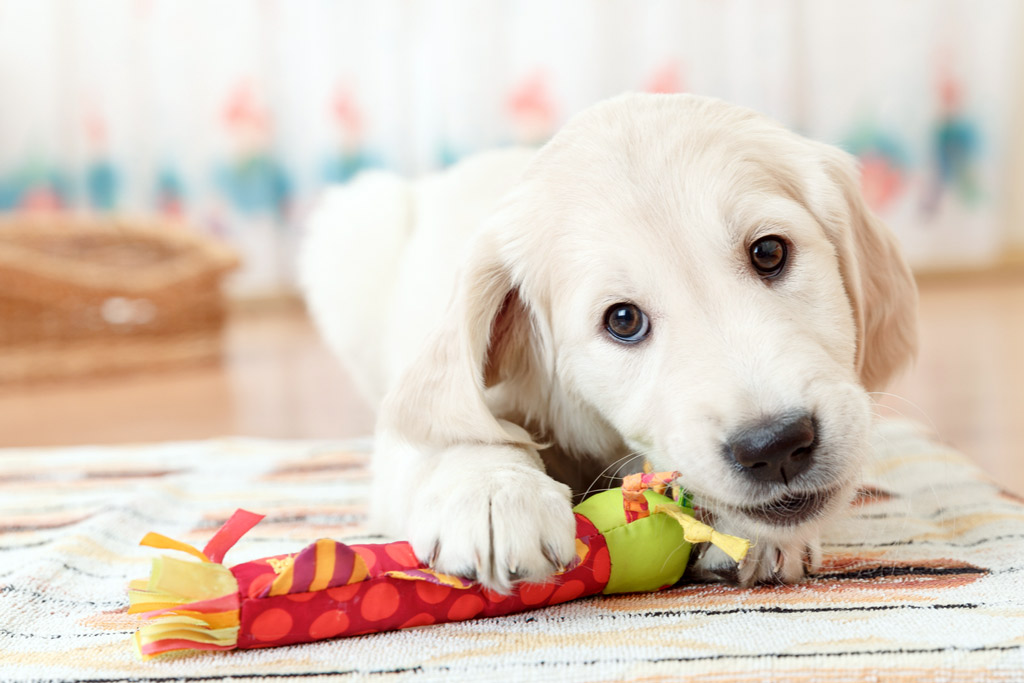
#3 – Your Dog’s Size Also Matters
Be sure to buy toys of appropriate size for your dog:
- Toys that are too small: They can easily be swallowed or become lodged in your dog’s throat.
- Toys that are too big: It becomes difficult and frustrating or even discouraging for your pooch to play with them.
As a general rule, when choosing a toy’s size make sure your pooch can carry the toy easily whilst also checking that it’s not small enough to become a choking hazard.
For example, fetch balls should be large enough to carry, but not too small that your dog can swallow them. Herding balls should be big enough that your dog can push them easily.
Use the guide in my favourite dog toys for a complete range of toy options depending on breed traits and preferences.
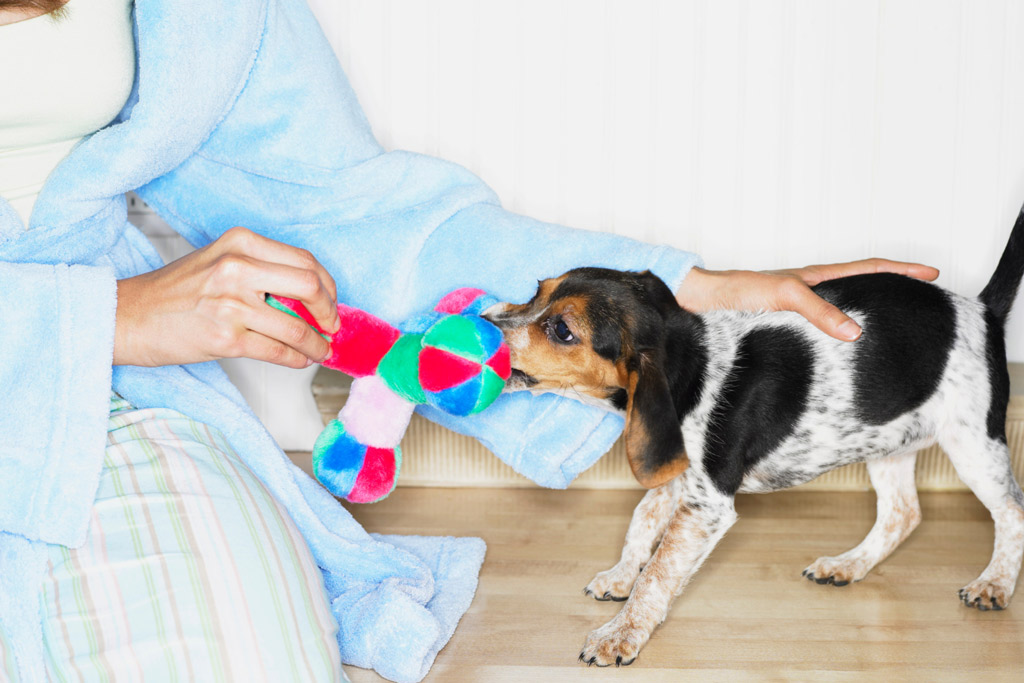
#4 – Prioritize Your Dog’s Safety
I’m sure you’ll agree that safety is a top priority and should never be neglected, so you want to make sure that your dog’s toys are “dog-proof”:
- Non-toxic materials: Check that the toy is made of non-toxic materials since your pooch will be licking and chewing on it. The label of the toy should read non-toxic and safe for dogs.
- Appropriate for your dog’s size: Exactly as just mentioned earlier, choosing the wrong size poses a safety hazard. Check the label on the toy for the recommended size range.
- Age-appropriate: If you have a puppy, you should replace her toys as she grows so they continue being appropriate for her age and size.
Also, follow these last two safety tips for safe play:
- Avoid or alter any toys that aren’t “dog-proof” by removing ribbons, strings, eyes or other parts that could be chewed off and ingested.
- Discard toys when they start to break into pieces or are torn.
- Playtime should be supervised, especially with extreme chewers.
- Plush toys can be unsafe for some dog, especially a soft stuffed toy.
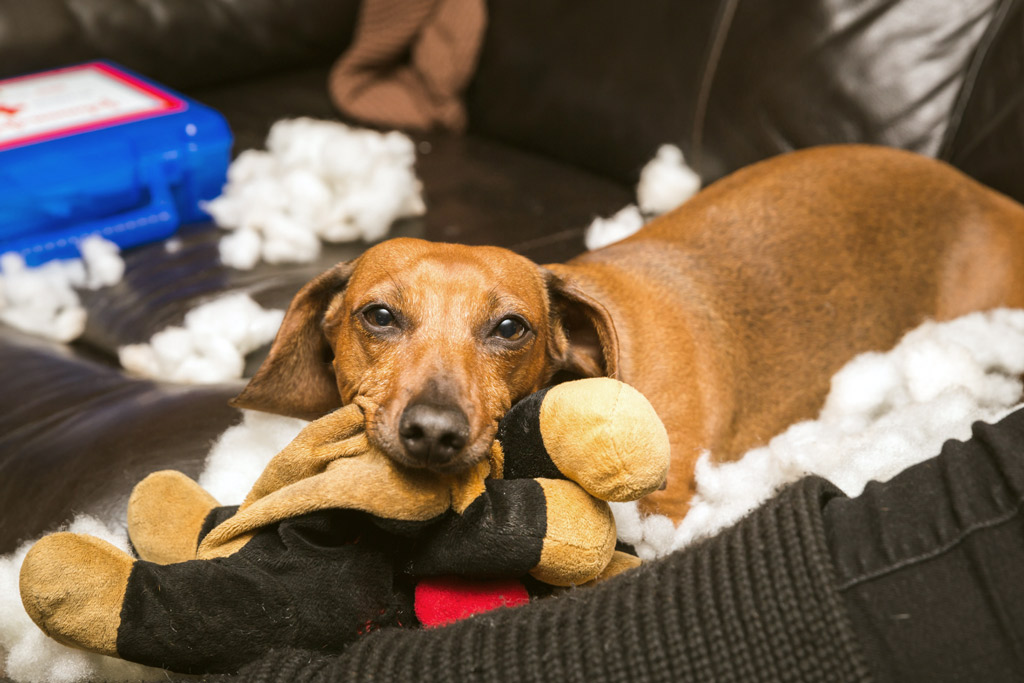
#5 – Novelty Plays a Role Too
According to a study by researchers at the University of Bristol’s Veterinary School, novelty is the most important quality in a toy.
The study, published in the animal behaviour journal Animal Cognition, researched dog’s preferences on toys.
Here are 2 interesting parts of the study that I found interesting and that you should know about:
“Because we think that dogs perceive toys in the same way that wolves perceive prey, they prefer toys that either taste like food or can be torn apart. However the latter can cause health problems if the dog accidentally swallows some of the pieces.”
John Bradshaw, study co-author and University of Bristol Veterinary School researcher.
Also…
“The perfect toys should be soft, easily manipulable toys that can be chewed easily and/or make a noise. Dogs quickly lose interest in toys with hard, unyielding surfaces, and those that don’t make a noise when manipulated.”
Anne Pullen, study co-author and researcher at University of Bristol.
However, regardless of the characteristics of a toy, dogs were more likely to go for the toy that was new versus the toy they had already played with.
That’s why monthly toy services can be a great option. They provide a variety of new toys and treats each month. Find out more at my favourite toys and treats solution.
Finally, the research team concluded that when we get involved with the toys, our dogs have way more of an attention span. 🙂
“For an animal as social as a dog, toys only become really excited when they are part of a game with a person. Few toys will sustain a dog’s interest for long if the owner is not around to offer encouragement.”
John Bradshaw, study co-author and University of Bristol Veterinary School researcher.
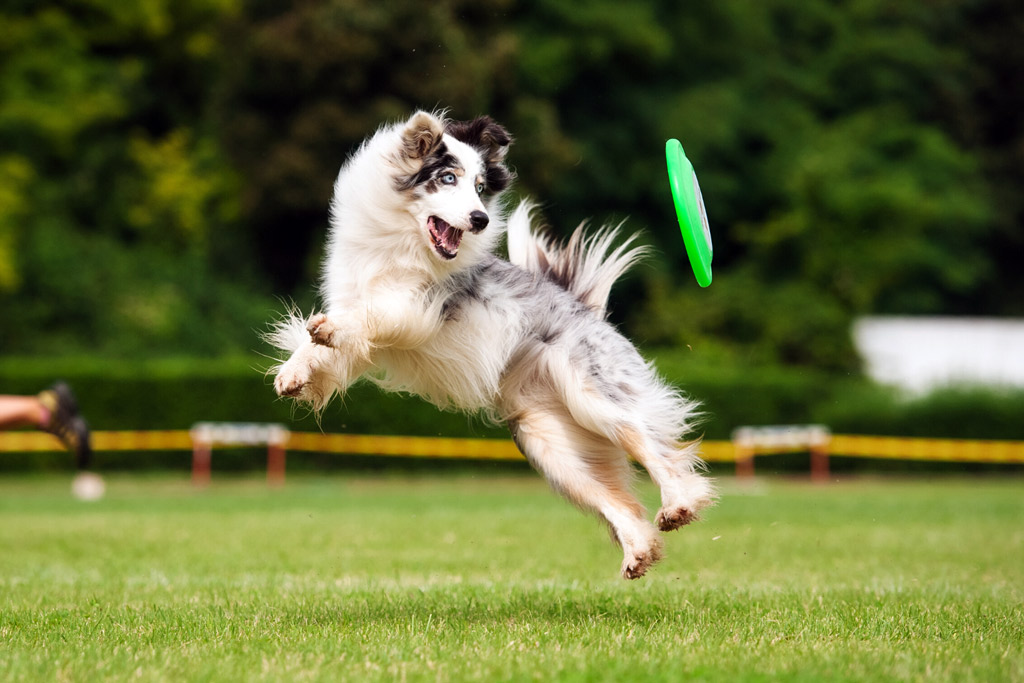
Types of Dog Toys
Here’s a list of some toys to consider:
- Fetch toys:
- Balls.
- Frisbees.
- Floating toys.
- Tug toys.
- Chew toys.
- Herding toys.
- Digging toys.
- Comfort toys:
- Plush toys.
- Sound toys:
- Squeaky balls.
- Soft squeaky toys.
- Whistle balls.
- Dispenser toys:
- Kongs.
- Treat balls.
- Interactive toys:
- Snuffle mat.
- Puzzle toys.
And don’t forget that with my favourite dog toys guide, you’ll discover more about toys for each dog instinct and which toys are suitable for your furry companion.
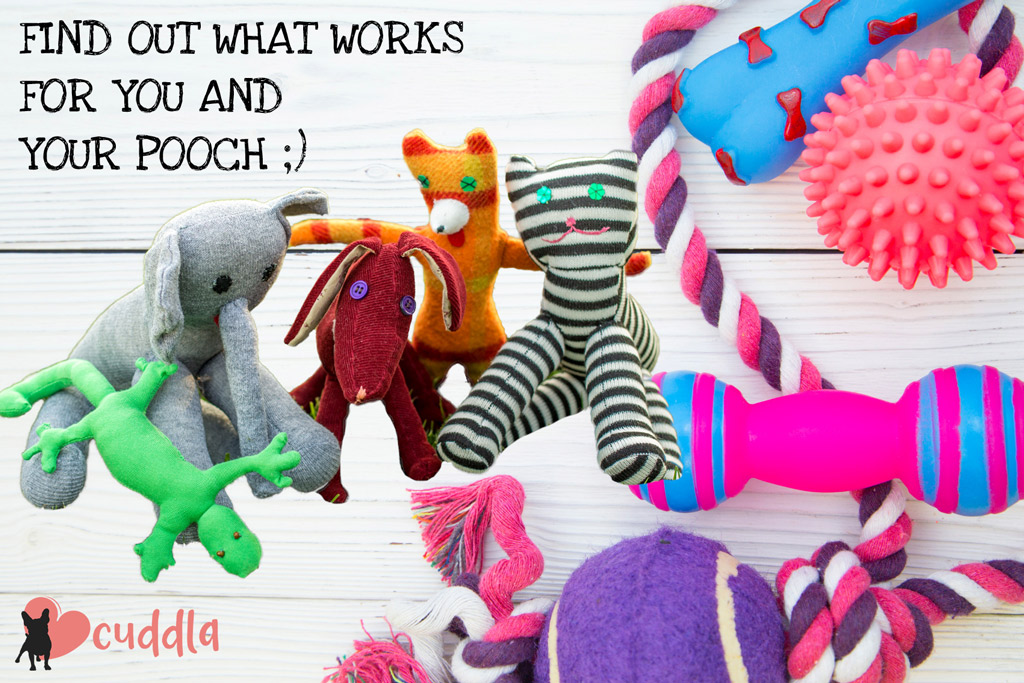
A Final Thought
When it comes to toys, I am an advocate for tidying up dog toys after playing for many reasons:
- It helps your dog to identify when it’s playtime and when it’s not.
- Dogs get bored with toys that they have access to at all times. Instead, when stored away, your dog will view her toys as an exclusive item.
- They can be a hazard if they are just laying around and in the way.
- Squeaky toys produce loud noises and you probably want to avoid that during the night, for example.
- Your dog and kid(s) can exchange their toys by mistake or on purpose (the other toy always look more fun from either’s perspective!)
- Because I like to be able to teach my dog the cool trick of tidy up after playing!
